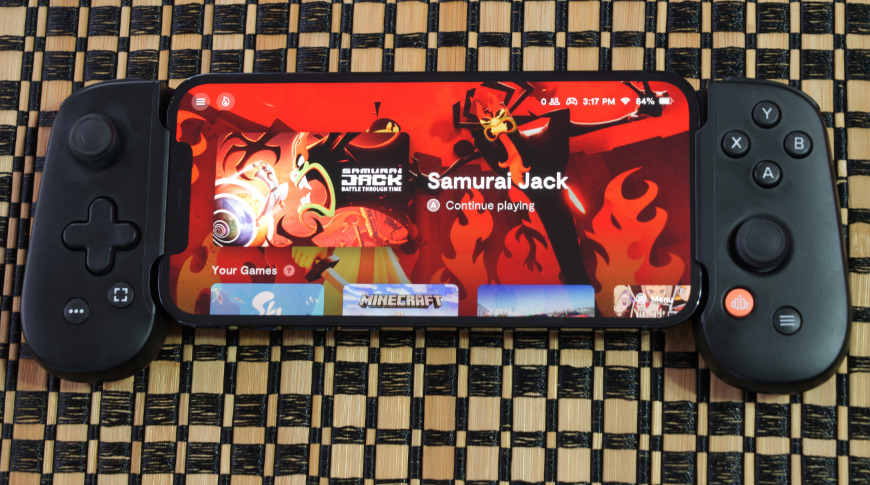

This is also where the one negative of the Backbone comes in: you can’t use it while your iPhone is in a case, which can be a bit annoying, considering most folks keep their iPhone protected inside one. The controller expands out to allow a phone to slide in, and closes with a satisfying click, with the phone cradled between rubber lips to keep it firmly in place.
Backbone game Bluetooth#
Along with skipping the Bluetooth connection for latency, the controller also has a dedicated headphone jack, in case you want to avoid all things Bluetooth and plug straight in for audio. The Backbone’s design choices sidestep some of the typical problems you might run into with video game controllers.
Backbone game 1080p#
That means no input lag, and no need to charge the Backbone, as it draws the power it needs directly from the iPhone (but don’t worry, it doesn’t pull enough juice to really notice).įor players who are used to snagging screen grabs and gameplay clips, the Backbone records up to 1080p at 60fps with a 20mbps bitrate for clips up-to 15 seconds, all from a dedicated physical button. Instead of relying on Bluetooth to connect, the Backbone snaps the iPhone directly into its own Lightning port. But the devil is in the details, and the Backbone gets most of them very right. The hardware itself has everything gamers have come to expect from a modern controller, with dual joysticks, trigger buttons on the shoulders, a record/screen shot button, a D-pad, and the buttons all feel solid. Considering how many different services it brings under one umbrella, it makes for a surprisingly elegant solution. Taking things a step further, the unified Backbone app serves as a one-stop hub to access your games across various platforms from one convenient spot. The Backbone supports pretty much all the major services gamers would be looking for, including PS Remote Play for PlayStation, Xbox Remote Play and Game Pass Ultimate, Steam Link, Google Stadia, Nvidia GeForce Now, Apple Arcade titles and most major mobile games.
Backbone game plus#
It’s small enough to fit easily in your bag without eating up much space but checks all the boxes you’re likely looking for in a handheld controller, plus a few more. Once connected, the iPhone serves as the screen and computing power, and the Backbone is the controller. The device is basically an expandable smart controller that lets you to snap your iPhone into the middle of it. No extra full-size piece of tech required. Where companies like NVIDIA and Steam (and a whole lot more) are looking to be the answer with a full-on handheld streaming computer built into a rig with a screen and modern controller trappings, a few others are trying to find a solution that takes advantage of the super-computer you have in your pocket already. The only problem is figuring out exactly which device you’ll be playing everything on when that future gets here. While it’d be easy to write this one off as “Oh, it’s the Backbone One but white,” it’s a pretty big stamp of approval for a relatively young startup like Backbone to get to release a PlayStation edition anything, all the way down to the PS logo hidden on the expanding back.We’re in the early days of what could be a cloud gaming renaissance, as the technology and bandwidth is finally catching up to the ambition and promise of a “play anything anywhere” kind of future.


Check out Matthew Panzarino’s review of the Backbone One here.
Backbone game android#
The idea behind the Backbone, for the unfamiliar: Take the Backbone, slide your iPhone (or, soon, Android device) into its expanding grip and bam - proper on-the-go gaming, buttons and all. This morning, Backbone (the company behind the Backbone One, a really-dang-good controller accessory for the iPhone) debuted a new variant of its device: Backbone One PlayStation Edition.


 0 kommentar(er)
0 kommentar(er)
